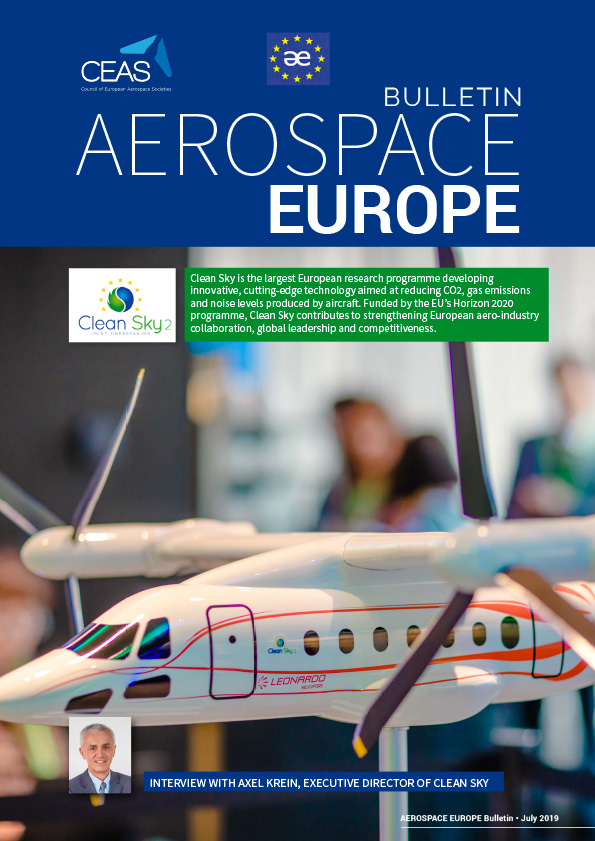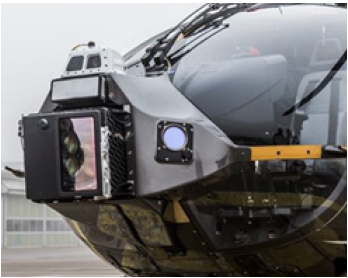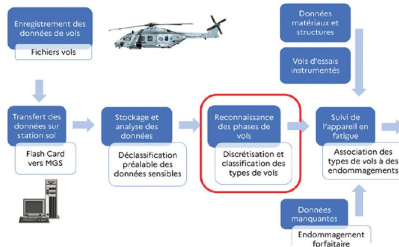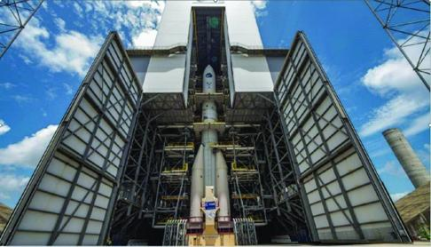Actualités

Bulletin AEROSPACE EUROPE / Juillet 2019
ADVANCING ENERGY TRANSITION IN AVIATION
Aviation represents today between 2 and 3% of CO2 emissions at worldwide scale, but to only maintain this level, it is mandatory to accelerate innovation in energy transition because of the 5% per year traffic growth which is foreseen in the coming years.
It is to be reminded that as soon as 2000, the European Commission had been a pioneer in matters of environmental impact by setting up the Advisory Council for Aeronautics Research in Europe (ACARE) whose the works resulted in the important report edited in 2001: ‘European Aeronautics: a Vision for 2020’. This was the commencement of Clean Sky. In the continuity of the successful achievements of Clean Sky 1, Clean Sky 2 was launched in 2014 as part of the European Commission’s ‘HORIZON EUROPE 2020’ programme, with the aim to reach the ‘Flightpath 2050’ goals, notably: 75% reduction of carbon dioxide CO2 emissions; 90% reduction in mono-nitrogen oxides NOx. And then Clean Sky 3, whose budget is to be voted in the end of 2019, will cover the period 2021-2027, will allow to continue and amplify the remarkable works achieved so far.
Besides in addition to research and trials of new more efficient aircraft designs and new more efficient propulsion systems, other ways are offering promising perspectives among which: alternative fuels, routing optimisation and more electrical aircraft.
In the near term, the use of biofuels will allow aviation improve its environmental sustai- nability and reduce its carbon footprint.
Considerable fuel is wasted due to inefficient routing. So, by shortening flight distances thanks to optimised ATM, using satellite navigation systems, it would be possible to re- duce fuel consumption by up to 10%.
The dream is the 100% electrical airliner is not realisable yet, this is the reason why the motto of the profession is simply for the time being: “More Electrical Aircraft”.
From decades, the electrification of non propelling elements is regularly progressing: auxiliary power units, landing gears, de-icing, air conditioning, taxiing.
Other hopes are all electric small drones capable of transporting 200-300 kg payloads between airport zones.
The ‘New Mobility Vehicles’ are also offering new perspectives: the electrical small vehi- cles E-VTOL (Vertical Take Off and Landing) for passengers and freight transportation and the flying taxis (like the Nexus developed by Bell Helicopter for which Safran provides its new electrical serie ‘Ingenius’.
The hybrid solution consisting in mixing thermal and electric propulsions is quite a pro- mising step. Here Airbus shows its ambitions with its E-Fan technology demonstrator the first test flight of which is expected in 2021. In 2025 fixed wing 10-20 passenger hybrid propulsion regional shuttles could be envisioned.
What could happen next? In 2040 a short-medium range 40 passengers regional all electrical aircraft, and later ... after 2050, an all electric 100- passenger airliner?
This brief enumeration gives an idea about the broad field of technology challenges our European scientists and engineers will take up, bringing so an eminent contribution to energy transition in aviation and to the fight against climate change.
Jean-Pierre Sanfourche
Editor-in-Chief









Aucun commentaire
Vous devez être connecté pour laisser un commentaire. Connectez-vous.